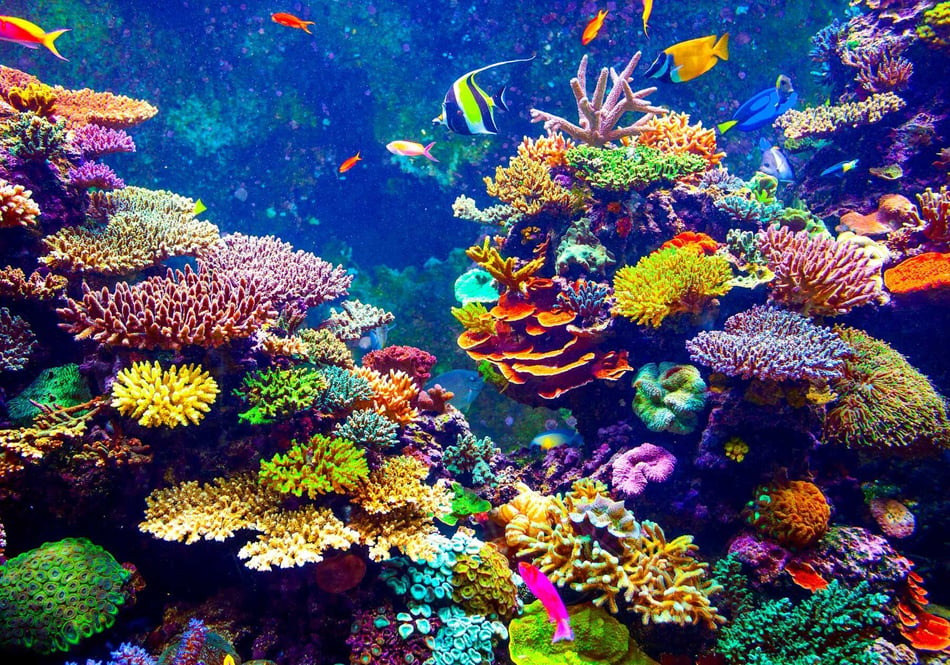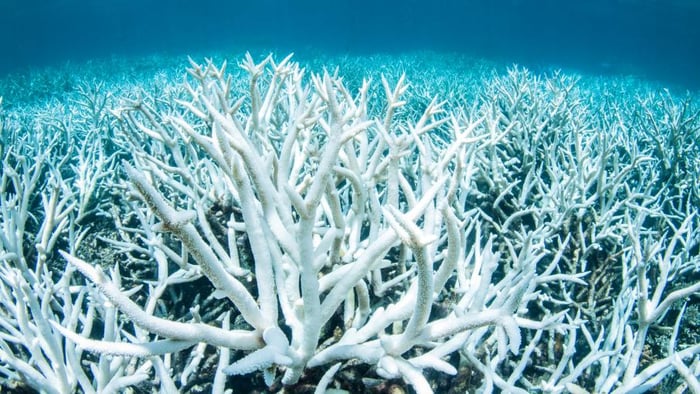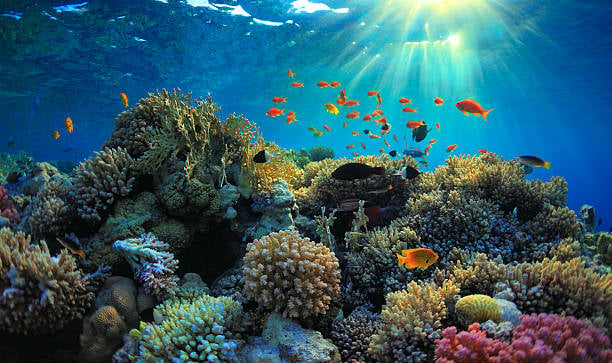Giant clams vs. corals: Their importance to reefs and the greater environment


Giant clams
Giant clams (genus Tridacna) are the largest bivalves in the world, with some species growing up to four feet in length. These mollusks are characterized by their large, colorful shells and their symbiotic relationship with photosynthetic algae called zooxanthellae. These algae live within the clam’s tissues, performing photosynthesis and providing the clam with essential nutrients in exchange for a safe environment.
Role in reef ecosystems
Giant clams are crucial for reef ecosystems in several ways:
- Habitat formation
Their shells, when they die, create habitats for other marine organisms. Over time, these shells can become substrates for the settlement of new coral polyps and various invertebrates. - Nutrient cycling
The waste products from giant clams, rich in nutrients, support the growth of phytoplankton, which in turn supports the entire food web of the reef. - Biodiversity hotspots
Their presence attracts a diverse range of reef fish and other organisms that rely on giant clams for shelter and food.
:max_bytes(150000):strip_icc():format(webp)/bayscallopeyes-565f9ac55f9b583386a55fb6.jpg)
Corals
Corals are colonial animals belonging to the class Anthozoa. Each coral colony is composed of numerous individual polyps that secrete calcium carbonate to form the hard skeleton of the reef. Like giant clams, many corals also engage in a symbiotic relationship with zooxanthellae. These algae live within the coral’s tissues and provide energy through photosynthesis.
Role in reef ecosystems
Corals are often considered the foundation of reef ecosystems, as they are the bedrock for:
- Structural framework
Corals build the physical structure of the reef, creating complex habitats that support a vast array of marine life. The calcium carbonate skeletons of corals form the backbone of the reef. - Ecosystem services
Healthy coral reefs provide essential services such as coastal protection from storms, habitat for commercial fish species, and support for local economies through tourism and fisheries. - Biodiversity
Coral reefs are one of the most diverse ecosystems on the planet, housing a staggering number of species, many of which are found nowhere else.
 Image Credits - https://www.the-scientist.com/a-probiotic-to-protect-caribbean-corals-71204
Image Credits - https://www.the-scientist.com/a-probiotic-to-protect-caribbean-corals-71204
Common threads and sustainability
Contributions to Sustainability
The structural complexity created by corals supports a diverse array of marine life, ensuring that reefs remain resilient and capable of sustaining fish stocks and other valuable marine resources.
Giant clams serve a similar, albeit smaller, role in maintaining the structure and function of reef ecosystems, which support fish populations and contribute to the sustainability of fisheries.

Sensitivity to Ocean Conditions
Temperature Changes
Coral bleaching is a well-documented phenomenon caused by elevated sea temperatures. When stressed by heat, corals expel their zooxanthellae, leading to a loss of color and a decline in coral health. Prolonged bleaching can result in coral mortality and the degradation of the reef.
Similarly, giant clams are affected by temperature changes. Elevated temperatures can lead to stress and the loss of their symbiotic algae, affecting their growth and survival.

pH
Increased CO2 levels cause pH levels to drop, which in turn reduces the availability of calcium carbonate, the essential compound for coral skeleton and giant clam shell formation. This can weaken corals and make them more susceptible to erosion and disease. It also impacts giant clams by reducing their growth and affecting the strength of their shells.
Pollution and nutrient runoff
Increased nutrient levels from runoff can lead to algal blooms that outcompete corals for space and light. Additionally, pollutants can damage tissues and affect the health of the symbiotic algae within both corals and giant clams, disrupting their nutritional balance and overall health.
Giant clams and corals are not only fascinating marine organisms, but also the most vital components of reef ecosystems that support biodiversity, contribute to sustainability, and provide essential services to human communities. Understanding their roles and the threats they face is crucial for the conservation - and potential restoration - of reef systems. As ocean conditions continue to shift, protecting these magnificent creatures and their habitats becomes increasingly important to ensure the health and resilience of reefs around the world.
The IMARCS Foundation is currently conducting novel research on how reef restoration can be implemented to increase biodiversity, and we are committed to fostering greater awareness and sharing effective restoration strategies once this research has been published. To learn more about our research please reach out to us via our website.
Sources:
Featured Image Credits - https://www.the-scientist.com/
Riegl, B., & Piller, W. E. (2003). Coral reefs of the Red Sea: Diversity, ecology, threats, and conservation. *In Coral reefs of the world (pp. 1-27). Springer. doi:10.1007/978-3-642-55928-0_1
Hughes, T. P., Kerry, J. T., Álvarez-Noriega, M., Anderson, K. D., Baird, A. H., Baum, J. K., ... & Wilson, S. K. (2017). Global warming and recurrent mass bleaching of corals. Nature, 543(7645), 373-377. https://doi.org/10.1038/nature21707
McCook, L. J., Jompa, J., & Diaz-Pulido, G. (2001). Competition between corals and algae on coral reefs: A review of the mechanisms and evidence. Coral Reefs, 19(4), 400-417. https://doi.org/10.1007/s003380100216
Blanchot, J., & Lochte, K. (2002). The role of giant clams in the nutrient dynamics of tropical coral reefs. Marine Biology, 141(6), 951-959. https://doi.org/10.1007/s00227-002-0873-3
Baker, A. C., Starger, J., McClanahan, T., & Glynn, P. W. (2004). Corals' adaptive response to climate change. Nature, 430(7001), 741-744. https://doi.org/10.1038/nature02725